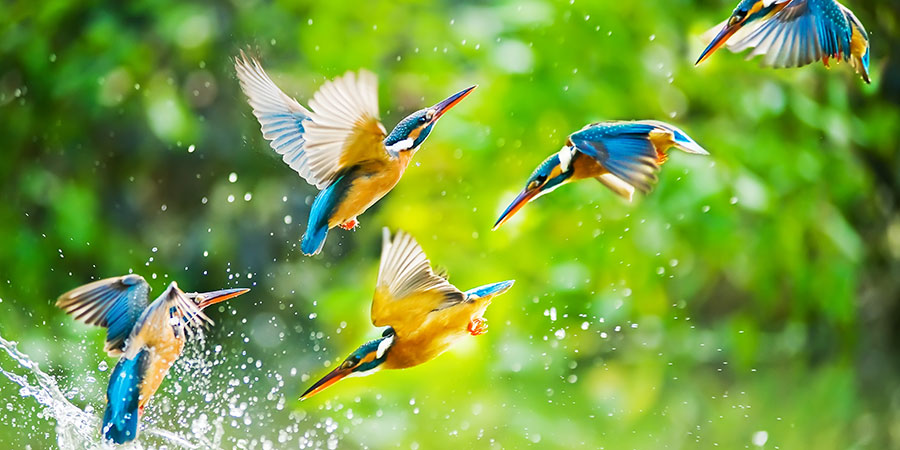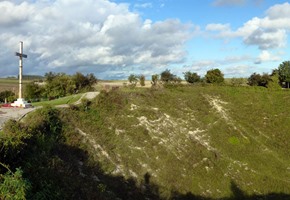Britain's wildlife is a thing to behold. The natural parks, forested hills and fertile meadows of all four islands play host, in particular, to an astonishing range of birdlife who call these weather-beaten coastal crags, lazy inland canals and rolling woods home. So here's to some of the avian beauties you can catch on your travels around our fair isles, keep an eye out for the following stunning birds of England, Wales, Scotland, Northern Ireland and the Republic of Ireland:
Red Kite
We kick off with a bird of prey and one of the most impressive success stories in modern day animal conservation and reintroduction in Britain. The red kite can be found across the UK, and are both scavengers and natural predators, preying on carrion and small mammals alike. With a distinctive red plumage, these birds are a sight to see and unfortunately, their species is under threat with an agricultural influence on their food resources. Despite decreasing populations in their native homes of France, Spain, Germany and Morocco, good news has come recently from Wales where the Welsh red kite was saved from extinction, with conservation efforts taking a population of just a few pairs of birds to nearly 1,000 breeding pairs. Since then, the red kite has become a Welsh national bird - the best places to see these glorious creatures is in the Preseli hills of Pembrokeshire.
Kingfisher
An iconic fixture in the bird-watchers programme, the marvellous kingfisher is one of Britain's most adored birds. Decked out in royal blue, white and orange, this river and canal-bound bird is a zippy character, often found zooming at high-speed towards their prey of fish, tadpoles and insects. As the name might indicate they are masters at the art of fishing, perching high in the reeds before launching to spear their food, travelling almost too fast to see. Kingfishers can be found predominately in England, often in the southern regions, and our recommendation would be the thriving population, found at the Lackford Lakes near Bury St Edmund's in Suffolk.
Puffin
The humble puffin is national treasure. With its resplendent beak, perennially anxious expression and smart dinner jacket feathers, this seabird is adorable. If the puffin was a human, he would bring homemade cupcakes to the village church meeting and then fret over whether everyone enjoyed his baking. Atlantic puffins are often found across the British Isles, from the Bempton Cliffs in Yorkshire, England to Skomer Island in Wales, often hiding out in the caves on cliff edges and hunting for fish in coastal regions. Our pick for where to see these chaps is up on the Isle of Mull in Scotland.
Robin
A symbol of Christmas, winter, snow or any other seasonal element, the cheery robin redbreast splashes a dash of red onto any midwinter scene. Rockin' or otherwise, the Eurasian robin was voted by over 200,000 people as Britain's favourite bird, and this charming little guy is found in gardens, parkland and meadows up and down the country. With a fine singing voice, an appetite for insects and a place in the British heart, the robin was always going to make his way onto this list. You can find them anywhere.
Swan
An elegant white symbol, an aristocrat of the air and water, the Swan is found on the waterways, ponds and lakes of British Isles. Our British swans are of the mute variety and are famously protected by the Wildife and Countryside act of 1981, meaning they are not to be harmed or hunted. With a beautiful white downy coat, a curling neck and a bright orange beak, spotting a swan among the ducks and geese of Britain is a delight. Our choice for where to spot one of these feathered ladies (or gents) is down in the forests and canals of the Norfolk Broads in eastern England.
Barn Owl
We were always going to feature an owl of some description on this list, but which one was a matter of debate. We settled on the barn owl, whose place in British culture and ethereal presence sets it apart from others of its species. The characteristic flat face is complemented by a pair of large, curious, black eyes and its white feathers set it out against the green countryside in which it finds itself. With hyper-sensitive hearing and sight, this is one of the most lethal and efficient hunters in the UK, hunting a variety of rodents. The Great Fen near Peterborough is an excellent place for Barn Owls, but it should be mentioned that naturally, owls are nocturnal creatures, making them fairly hard to see.
Blue Tit
Offering a joyous splash of colour against the garden lawn, the pretty blues, yellows, blacks and whites of blue tits recall the brilliance of birds of paradise; they are the scarlet macaws of the British Isles. Its diet of insects and the dearth of nesting places suggests that the blue tit is in little danger of extinction, while its learning habits have seen it develop intuitive ways of sourcing more food. A fun example of this is the habits of blue tits throughout the 20th century who broke into the foil coverings of milk bottles on city doorsteps to get at the cream underneath. Like its smaller friend the robin, the blue tit can be found across Britain.






